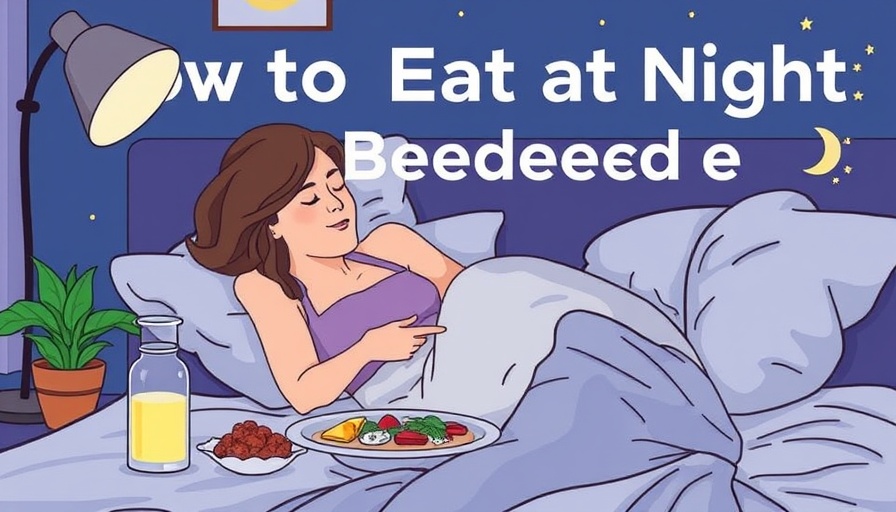
Understanding the Importance of Mindful Eating at Night
Do you often find yourself reaching for snacks while binge-watching your favorite series, only to feel unsatisfied and guilty afterward? You aren’t alone. Many people struggle with nighttime overeating, impacting their sleep and overall well-being. Studies reveal that individuals who eat mindlessly at night are more likely to experience dietary imbalances, contributing to poor sleep quality and health complications.
Why Eating at Night May Disturb Your Sleep
Several factors explain how nighttime eating can hamper your sleep. Heavy or greasy meals consumed shortly before bedtime can disturb your digestive system, leading to discomfort and restlessness. Additionally, indulging in sugary snacks can cause blood sugar spikes, resulting in a crash that disrupts your sleep patterns. Increased levels of cortisol due to irregular eating habits can interfere with melatonin release, your body's natural sleep hormone.
Common Mistakes to Avoid for Better Sleep
Many of us make simple mistakes that contribute to overeating at night. Skipping meals during the day often leads to extreme hunger by evening, resulting in oversized portions that do more harm than good. Grazing while distracted by screens can cause us to overlook satiety cues, keeping us nibbling mindlessly. It’s crucial to develop a clearer understanding of these habits to foster better eating practices.
Mindful Eating Habits: Transforming Your Nighttime Routine
You can improve your nighttime eating habits without resorting to restrictive diets. Here are some strategies that can help you achieve a more balanced approach:
1. Create Balanced Evening Meals
Focus on meals that combine protein with healthy fats and complex carbohydrates. For instance, dishes like grilled chicken with roast potatoes and broccoli or quinoa salad mixed with chickpeas can provide a satisfying end to your day, ensuring you receive the nutrients your body craves.
2. Time Your Meals Wisely
Aim to finish eating at least two to three hours before bedtime. This allows your body to digest the food effectively, reducing the risk of discomfort that leads to poor sleep. Remember, digestion takes time and your body will thank you for it.
3. Recognize Your Body’s Signals
Practice mindful eating by tuning into your body's hunger cues. Slow down and savor your food, which can help you appreciate flavors and textures while allowing you to notice when you're full. Engaging your senses can enhance your meal experience and help you avoid the guilt often associated with overeating.
4. Limit Distractions During Meals
When eating, try to limit distractions by turning off the television or putting your phone away. Creating a calm environment can improve mindfulness and transform meals into gratifying experiences, fostering a stronger connection with what you consume.
5. Motivate with Positive Reinforcement
Replace the guilt of indulgence with positive reinforcement. Remind yourself that it’s perfectly fine to enjoy a late-night snack occasionally; each choice is an opportunity for learning and improving habits.
Future Predictions: Welcoming a Healthier Nighttime Routine
As awareness grows about the importance of nighttime eating habits, expect to see a surge in programs focusing on mindful eating across various platforms. With fresh interest in nutrition and wellness, local workshops in Fresno could emerge to equip residents with tools for better dietary choices. Engaging with community health programs can create a strong support network for individuals looking to embrace mindful nighttime habits.
Conclusion: Making Lasting Change for Better Sleep
By applying these mindful eating tips, you can cultivate better nighttime habits that enhance your sleep and overall well-being. Remember that every small change counts toward a healthier, more fulfilling lifestyle. If you’re ready to transform your eating patterns, consider reaching out to local nutrition experts in Fresno to gain further insights and support. Embrace the journey to better health, one bite at a time!
 Add Row
Add Row  Add
Add 



Write A Comment